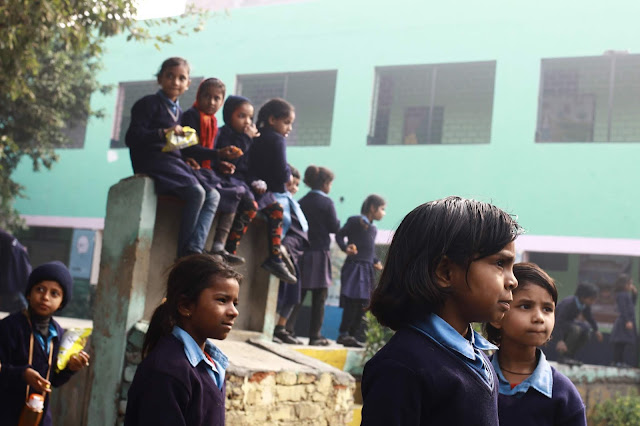Documenting India: a country that defies description
It has been the subject of religious pilgrimages, Western humanitarian documentaries and ruthless colonialism. It’s also a country known for its vibrant culture, its exhilarating Bollywood films and its rich and complex cuisine. This winter, I had the opportunity to travel throughout India, the world’s second most populous country. As we emerged out of Indira Gandhi International Airport and crept through the early New Delhi morning, the air smelt burnt and crisp, like it was on fire. Passing through the city, the stillness of the lights smeared by smog, it felt almost apocalyptic, like the end of the world had arrived and I was but a passenger inside its final moments.
I had been to China a few years earlier, so I knew the pollution would probably be similar to what I had encountered in Beijing. Aside from this, however, I wasn’t sure what to expect. Nothing in life thrills me more than traveling and before I go to a country, I prepare myself by banishing my preconceptions and thinking of myself as a sponge, ready to experience and soak up everything I see, hear and smell with earnest fervour. Having lived in an American city where white people fetishize India on all levels, from religion to clothing to viewing it as a potential missionary opportunity, I was aware of the problematic mentality that permeated Western culture toward the country. It was therefore my mission as a photographer to not show the exotic, “picture-perfect postcard” India that so many people want to see you pull out of your suitcase, but instead to document the reality: beautiful, ugly, complex, impoverished, wealthy, drastic, overwhelming, slow and vibrant.
This photo essay was taken throughout a period of three weeks in the cities of New Delhi, Jaipur, Agra, Bodh Gaya and Banaras, amongst other places. Although I loved everywhere I went, each for different reasons, it was the city of Banaras that intrigued me the most. Banaras, otherwise known as Varanasi, is one of the oldest cities on Earth and is a sacred site of pilgrimage for Hindus and Jains. Having expressed interest in Banaras before my trip, I had been told it was the “shithole of India” and another individual told me that I would not be intrigued by it once I arrived there, as it was known to be filthy. I’m not a spiritual or religious person, so I didn’t come there looking to go to a temple or swim in the Ganges, but there was just an intensity to the city as I roamed the streets in the early morning hours that made me fall in love with it instantly. Perhaps it is the fact that it is filthy, raw and sincere, populated with people who have either lived there their whole lives or are simply passing through, that made me feel comfortable in its streets.
As we passed throughout the country, I was both overwhelmed and energized by the number of people that were everywhere. It was especially important that I was able to see the India that very few Western tourists go out of their way to find, such as the slums of New Delhi or the small villages where people had to bike miles just to go to school. In a country of so many people, it was surprising to find so many individuals who seemed lost in their own lives, quietly trapped in thought, strolling throughout their days weighed down by their own burdens and concerns. One of the particularly cool things that I liked about Indian society was the tendency to take a break from the overwhelmingly fast-paced culture to search for and appreciate the silent moments, which usually involved a delicious cup of chai tea. As a country, India encompasses so many adjectives and if anyone says they truly understand it in every aspect, from its politics to its history to its people, I will be immediately skeptical.
The original version of this photo essay appeared in Recount Magazine.









































Comments